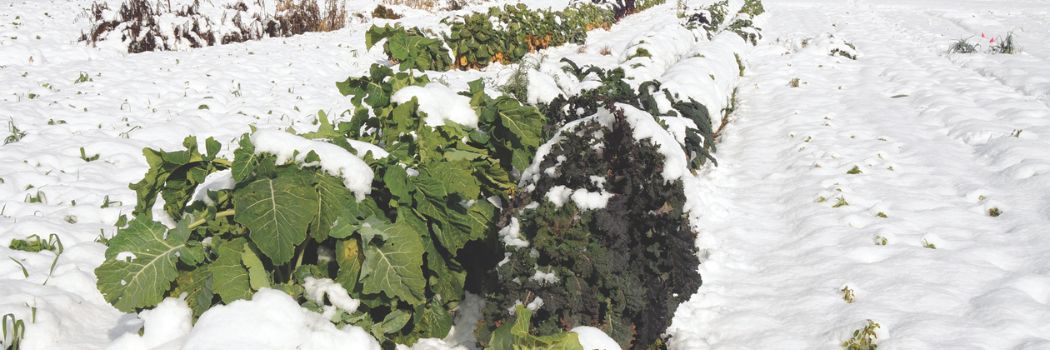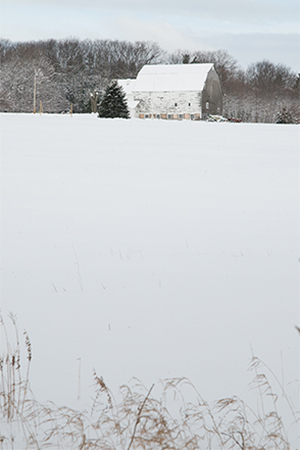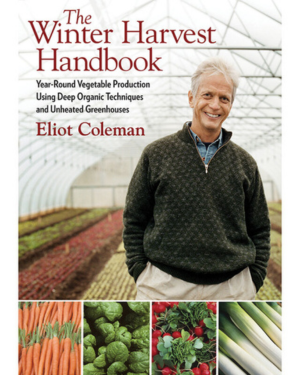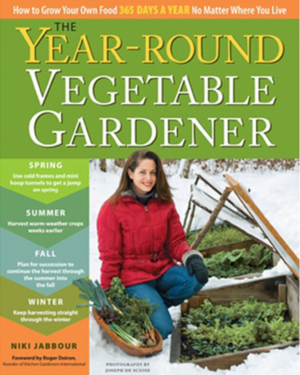- 10 Ways to Extend Your Season with Protected Cultivation
- QuickHoops Gothic High Tunnel Bender | Construction Manual for Modular Moveable Gothic High Tunnel (PDF)
- QuickHoops Gothic High Tunnel Bender | Construction Manual for Stationary Gothic High Tunnel (PDF)
- QuickHoops High Tunnel Bender | Construction Manual for Building a Stationary High Tunnel (PDF)
- QuickHoops Low Tunnel Benders | Instruction Manual (#9377 & #9520) | (PDF)
- Agribon+ AG-19, 30, 50 & 70 Row Cover | Insert (PDF)
- Hitch Mount for QuickHoops Low Tunnel Benders | Instruction Manual (PDF)
- Bobcat Automatic Ventilation Kit Manual (#6791) | Tech Sheet (PDF)
- Bobcat Pro High Tunnel Kit Manual (#6794) | Tech Sheet (PDF)
- Bobcat Pro High Tunnel Kit (#6794) | Parts List (PDF)
- Bobcat Sliding Door Kit Manual (#6792) | Tech Sheet (PDF)
- Bobcat Standard High Tunnel Kit Manual (#6795) | Tech Sheet (PDF)
- Bobcat Standard High Tunnel Kit (#6795) | Parts List (PDF)
- Bobcat Steel End Wall Kit Manual (#6793) | Tech Sheet (PDF)
- Truss Support Kit Manual (#6790) | Tech Sheet (PDF)
- Bobcat Tunnel Kits | Comparison Chart
- Beginning & Intermediate Controlled Environment Agriculture (CEA) | Advances in Greenhouse Crop Production
- 5 Cool Flowers to Plant Now | Lisa Mason Ziegler's Secrets for Growing Hardy, Cool-Season Annuals
- Hoop Loops | Installation Instructions | Tech Sheet (PDF)
- Introduction to Overwintering Flowers | Guide to Overwintering Flowers
- Overwintering Perennial Herbs
- Protect Your Crops | High & Low Tunnel Basics
- The Effect of Shorter Daylength on Winter Production
- Be First & Last to Market by Extending Your Growing Season
- Quick Hoops Low Tunnels | Set-up & Management with Eliot Coleman
- Constructing the Modular Moveable Gothic Tunnel – Animated Schematic
- Moving the Modular Moveable Gothic Tunnel – Slideshow
- Skinning the Modular Moveable Gothic High Tunnel – Slideshow
- Overwinter Flower Trials | Multiyear Results for 30+ Crops | Johnny's Selected Seeds | XLSX
- Seeding Date Calculator | Johnny's Recommended Flowers for Overwintering | XLSX
- Overwintering Onions from Seed | Johnny's Selected Seeds
- Winter Growing Guide | Part 5: Overwintering Planting Dates
- Pest & Disease Control Basics in Greenhouse, Hydroponic & Other Protected-Culture Systems
- Pests & Diseases of Greenhouses & Hydroponic Systems | Tech Sheet (PDF)
- Why & What to Grow in a Greenhouse? Basics of Protected Culture
- Recommended Varieties from Our Greenhouse Trials | What We Look for in Greenhouse Crops
- QuickHoops 3'W x 4.5'H Low Tunnel Bender (#7616) | Instruction Manual (PDF)
- Cable Purlin Trellis for QuickHoops High Tunnels | Installation Manual (PDF)
- QuickHoops Moveable High Tunnel Bender | Instruction Manual (PDF)
- QuickHoops Seedling & Microgreens Bench | Construction Guide (PDF)
- Row Cover & Insect Netting Options & Uses | Comparison Chart (PDF)
- Tufflite IV Greenhouse Film | Comparison Chart (PDF)
- Univent Automatic Opener for BiFold Doors | Instruction Manual (PDF)
- Video: Johnny's Season Extension & Overwintering Trials
- Video: Planning & Planting the Autumn Vegetable Garden | Tips & Recommendations with Niki Jabbour
- Video: Veggie Remix: Bring New Flavors & Colors Into Your Garden | Johnny's Webinar Series
- Video: Growing Under Cover with Niki Jabbour | Johnny's Webinar Series
- Video: Cover Cropping for Field & Garden with Collin Thompson | Johnny's Webinar Series
- Video: Tips & Crop Recommendations for the Autumn and Winter Cold Frame • Tutorial with Niki Jabbour
- Video: DIY Cold Frame • Easy How-to Tutorial with Niki Jabbour
- Video: How to Use Quick Hoops™ Benders to Create High & Low Tunnels
- Video: The Benefits of Row Covers | Recommendations & Tips
- Video: Hoop Houses & Other Ways to Extend Your Growing Season
- Video: Take a Tour with Us of Johnny's Greenhouses!
- Growing Under Cover with Niki Jabbour & Johnny's | Johnny's Educational Webinar Resources
- Johnny's Winter Growing Guide | Printable Brochure (PDF)
- Winter Growing Guide | Part 2: Production in the High Tunnel
- Winter Growing Guide | Part 1 - Introduction
- Winter Growing Guide | Part 3: Overwintering in Low Tunnels
- Winter Growing Guide | Part 6: Recommended Crops & Varieties
- Winter Growing Guide | Part 4: Planting Dates for a Winter Harvest
- Choosing Flower Crops to Overwinter | Guide to Overwintering Flowers
- When to Start Seeds for Overwintered Flowers | Guide to Overwintering Flowers
- Gardening in a Cold Frame With Niki Jabbour
- Webinar Slide Deck | Overwintering Flowers | 41-pp PDF
- Video: Irrigation Considerations for the Overwinter Flowers Tunnel | Johnny's Selected Seeds
- Video: Winter Sowing & Milk-Jug Greenhouses | With Niki Jabbour & Johnny's

Winter Growing Guide
Winter Growing Guide
Winter-Harvest vs. Overwintering

Here at Johnny's Research Farm in Albion, Maine, the Persephone period begins on November 6th.
It ends on February 6th, when daylight at our latitude again reaches 10 hours in length.
When temperatures drop and daylength dwindles, your harvest season need not come to a full stop. As more growers add high and low tunnels to their operations and participate in winter markets, we are frequently asked: What can I plant to harvest in winter, and when should I plant it?
Producing marketable crops in winter requires learning the correct planting window dates for your location. We've developed this guide to provide a starting point, primarily for growing within unheated tunnels. You can use the charts and guidelines presented here while adjusting the techniques and timing to fit your own region and practice. Remember to keep records, to determine what works best and improve upon your successes.
To begin, it is helpful to distinguish between the two basic winter growing strategies. The first group you harvest in winter, the second group you leave in place over the winter to produce an early spring crop.
- Winter-Harvest Crops are planted in late summer or early fall, primarily in high tunnels, for harvest throughout the winter.
- Overwintered Crops are planted in the fall or winter, often outside in the field or under low tunnels, and left in place for the earliest possible spring harvest.
Note that there may be no real bright line between them in your system, but we suggest conceptualizing them separately as a way to create a production timeline. There is plenty of flexibility and overlap in the methods employed, and many growers combine methods and practice succession planting to achieve four-season production.
Winter Harvest Fundamentals
The Persephone Period: 10 hours of day light
The key to scheduling your winter-harvest plantings is to identify the date by which your day length has decreased to 10 hours on its trajectory to the winter solstice. It is during this darkest time of the year — referred to by Eliot Coleman as the Persephone period — that growth slows to a glacial rate for most crops.
(You can obtain exact dates for your location using an app or website such as Sundial • Solar & Lunar Times or SunriseSunset.)
The goal is to seed your plants so they are about 75% mature by the time you enter the Persephone period.
Though plants may not grow appreciably thereafter — that is, until day length has again increased to 10 hours plus — they can be harvested as needed as long as their maturity holds.
Careful scheduling allows you to control growth incrementally by planting at least two or three sowings at 7–10-day intervals, decreasing the time between plantings down to 2–5 days as you approach the Persephone period. Staggering the plantings in this way allows for crops to mature at different times and provide a longer harvest period. You might want to seed on September 20, September 27, and then October 1, for example. With well-timed, staggered plantings you can create a smooth transition from one harvest to the next for a steady supply through the winter. Multiple seedings also help you identify the best seeding dates for specific crops (which you could then record) and spread out the risk of crop failure due to unfavorable weather conditions.

The Winter Harvest Handbook by Eliot Coleman is a comprehensive handbook for raising crops throughout the winter.
Two ways to get plants ready for the darkest days in high or low tunnels
- Transplant crops like spinach that are normally direct-seeded. Start the plants elsewhere and grow them to transplant size before planting them in your high tunnel, after your summer-producing/summer-fruiting crops have been removed.
- Establish hardy crops outside in late summer, then place a moveable tunnel over them or construct a caterpillar tunnel over the crop as winter draws near.
Squeeze in even one more crop
Anticipate and plan for any open bed space that may become available in late winter, once you have harvested your winter crops.
- Some crops, like lettuce, will be finished in early to mid winter.
- Other crops, like mustards, will bolt coming out of the Persephone period, so they'll be finished then. As the end of the Persephone period draws near, they can, for example, be replaced with direct-seeded spinach or brassicas.
These late-winter sowings will be ready for harvest by early spring, often long before the same crop would, had it been grown outside.
Overwintering Fundamentals

The principles of winter growing can be applied at any scale. In The Year Round Vegetable Gardener, Niki Jabbour discusses how to achieve a year-round harvest in the home garden.
Overwintering entails establishing very young plants that can survive the winter and resume growth extra early the following spring. Once daylength increases to 10 hours, these plantings will grow rapidly.
Keep in mind that wide fluctuations in late-winter temperatures can sometimes cause overwintered crops to bolt before they reach a harvestable stage. This can be minimized by choosing varieties with greater bolting tolerance. (See our Good for Overwintering category, for which varieties are selected on this basis through our overwinter trialing programs.)
The most calculated approach to scheduling seeding for overwintered crops involves seeding in the late summer to late fall, depending upon the crop. (Be sure to review the Overwinter Planting Chart for the crop-specific planting windows.) The correct timing will allow germination and the first stages of growth to occur before the plant goes dormant during the Persephone period. Growth will begin again when days begin to lengthen.
Another overwintering method involves sowing just before the ground freezes, so that germination occurs after deep winter, as daylength increases and temperatures warm. This method can result in a lot of dead seed, however, if conditions do not pan out. (There is a risk that a higher percentage of seeds will rot in the soil during cold, wet conditions.)
An additional strategy is to seed just as the ground begins to thaw, or just as the Persephone period is ending (so technically, this is not overwintering). This works well for direct-seeded spinach and brassicas. Only the top inch or two of soil needs to be thawed in order to plant the seed.
Scheduling Guidelines
Use our charts to determine planting dates by crop for winter harvest and overwintering. Keep in mind that the planting dates are relative to the Persephone period at your latitude.
Overwintering Flowers
The principles of overwintering can be applied to cold-hardy annual flower crops to achieve an early harvest season. We share the findings from our extensive overwintering flower trials in the following resources:
- Guide to Overwintering Flowers
- Results by crop
- Calculator to determine seeding dates
- Video tutorials & webinar resources

